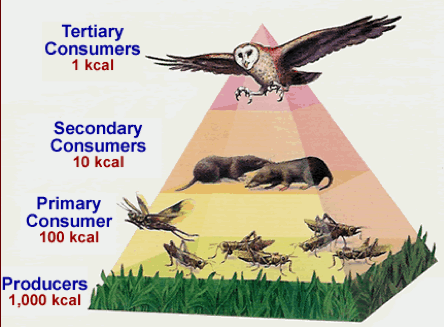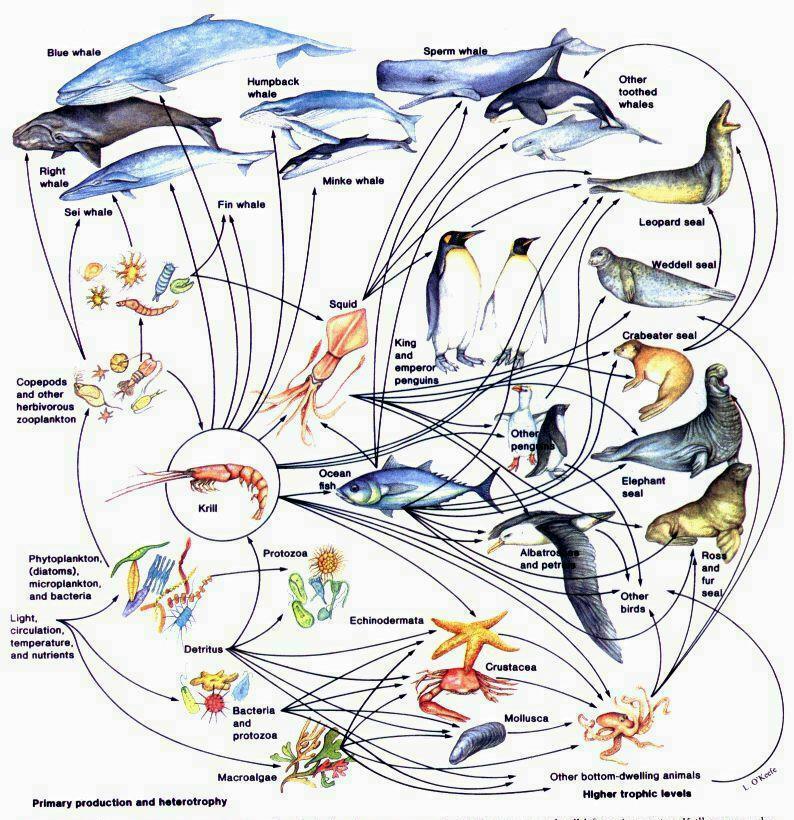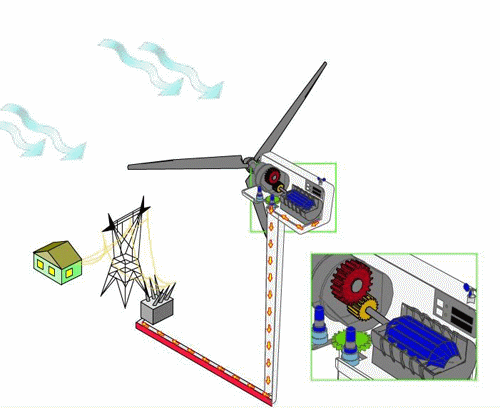Energy Literacy
The essential principles and fundamental concepts.
"the concepts are not intended to be addressed in isolation; a given lesson on energy will most often connect to many other concepts."
basics | seven concepts | natural laws | examples | diagrams | terms | links | sources
Basics
 These seven "broad categories of big ideas" that are each "supported by six to eight fundamental concepts."
These seven "broad categories of big ideas" that are each "supported by six to eight fundamental concepts."
One:
"Energy is a physical quantity that follows precise natural laws."
Two:
"Physical processes on Earth are the result of energy flow through the Earth system."
Three:
"Biological processes depend on energy flow through the Earth system."
Four:
"Various sources of energy can be used to power human activities, and often this energy must be transferred from source to destination."
Five:
"Energy decisions are influenced by economic, political, environmental, and social factors."
Six:
"The amount of energy used by human society depends on many factors."
Seven:
"The quality of life of individuals and societies is affected by energy choices."
Restatements
basics | seven concepts | natural laws | examples | diagrams | terms | links | sources
Energy is that constant quantity that only can be transferred from one system to another with a net loss of efficiency when transformed from one subordinate-system to another.
- First Law of Thermodynamics: Energy (or matter) can neither be created nor destroyed, only converted or transformed.
- Second Law of Thermodynamics: Every conversion, or transformation of energy from one form into another leads to an increase of entropy, or heat.
Take for example three cases of heat generated due to inefficient conversion of energy from one state to another.
1, The amount of sunlight (or radiation) falling on a plant's leaves cannot be fully used in making sugar by the process of photosynthesis.
2, By comparison the ultra-violet light falling on a solar electrical panel cannot be fully converted into electrical current.
3, In the final example a car engine converts chemical fuel into motion but when burning this petroleum gasoline fuel the motor creates waste by-products that accumulate from incomplete combustion and an enormous amount heat (a measure of disorder) is generated by this process.
basics | seven concepts | natural laws | examples | diagrams | terms | links | sources
Flow means the transfer of radiant energy or radiation from the sun or from the Earth's molten interior to the surface. Electrons flow generating an electrical current.
Radiant solar and geothermal energy flow through the Earth system.
basics | seven concepts | natural laws | examples | diagrams | terms | links | sources
1.1 "Energy is the ability of a system [things or persons] to do work.
1.2 "The energy of system or object that results in its temperature is called thermal energy."
1.3 "Energy is neither created nor destroyed."
1.4 "Energy available to do useful work decreases as it is transferred . . . .
1.5 "Energy comes in different forms and can be divided into categories."
1.6 "Chemical and nuclear reactions involve transfer and transformation of energy."
1.7 "Many different units are used to quantify energy."
One calorie of energy is equal to 4.186 joules.
1 calorie = 4.186 joules
kcal is 1000 calories, or a kilocalorie
1.8 "Power is a measure of energy transfer rate."
So "one joule of energy transferred in a second is one watt !"

![]()
The Earth
2.2, "Sunlight, gravitational potential (falling water), decay of radioactive isotopes, and rotation of the Earth are the major sources of energy driving physical forces on Earth."
2.4, "Water plays a major role in the storage and transfer of energy in the Earth system."
2.6, "Greenhouse gases [ or heat-trapping vapors in the atmosphere ] affect energy flow through the Earth system."
2.7, "The effects of changes in Earth's energy system are often not immediately apparent."

The Sun and biological processes
3.1 "The sun is a major source of energy for organisms and the ecosystems of which they are part."
3.2 "Food is a biofuel used by organisms to acquire energy for internal living processes."
3.3 "Energy available to do useful work decreases as it is transferred from organism to organism."
3.4 "Energy flows through food webs in one direction, from producers to consumers and decomposers."
The Diverse Sources of Energy
4.2 "The human use of energy is subject to limits and constraints."
4.3 "Fossil and biofuels are organic matter that contain energy captured from sunlight."
4.5 "Humans generate electricity in multiple ways."
4.6 "Humans intentionally store energy for later use in a number of different ways."
Decision making and four influential factors
5.1 Energy use decisions are made at many divergent levels.
5.2 "Energy infrastructure has inertia."
Human social uses of energy
6.1 "Conservation of energy has two different meanings."
Where does my energy dollar go? Purposes Percentages space heating
29% cooling
17% water heating
14% appliances
13% lighting
12% electronics
_4% other
11% "Annual energy bill for a typical U. S. single-family home is approximately $2,200." *
6.4 "The Earth has limited energy resources."
Measuring the Quality of Life
7.1 & 7.3 Economic security and environmental quality are affected by energy use and choices of fuels to power both personal and social systems.
Physical Quality of Life is an index of nations and is to a great extent measured in such a manner that electricity use improves the status which is termed "quality."
basics | seven concepts | natural laws | examples | diagrams | terms | links | sources
biofuel, any fuel produced from living matter, called biomass, or organic material used directly for energy; for example: wood, charcoal, dung, or grass.
Conservation has two very different meanings in relation to energy.
1) First it means that technically speaking energy and matter are never destroyed merely converted from one to the other with a net loss of efficiency.
2) Secondly and more commonly conservation means to use less, reduce the waste of energy, or use fuels more efficiently with less pollution.
Embodied energy, all products and any service carry embedded within them a measurable requisite amount of power needed for the entire life cycle of the product, or the completion of the processes by which service is rendered. "An accounting of the embedded energy in a product or service, along with the knowledge of the sources of energy, is essential when calculating the amount of energy used and in assessing impacts and consequences."
The term entropy defines the measure of disorder in a system or condition; that is the degree of disorder or randomness in a system increases over time. This degradation of order, or coherence in a wave, is inherently unpredictable in any arrangement of items wherein energy is transferred.
In practical terms entropy means that there exists a measurable amount of unavailable thermal energy that cannot be turned into mechanical energy in order to accomplish a task. This is true for all living and non-living systems that transform or transfer energy.
basics | seven concepts | natural laws | examples | diagrams | terms | links | sources






